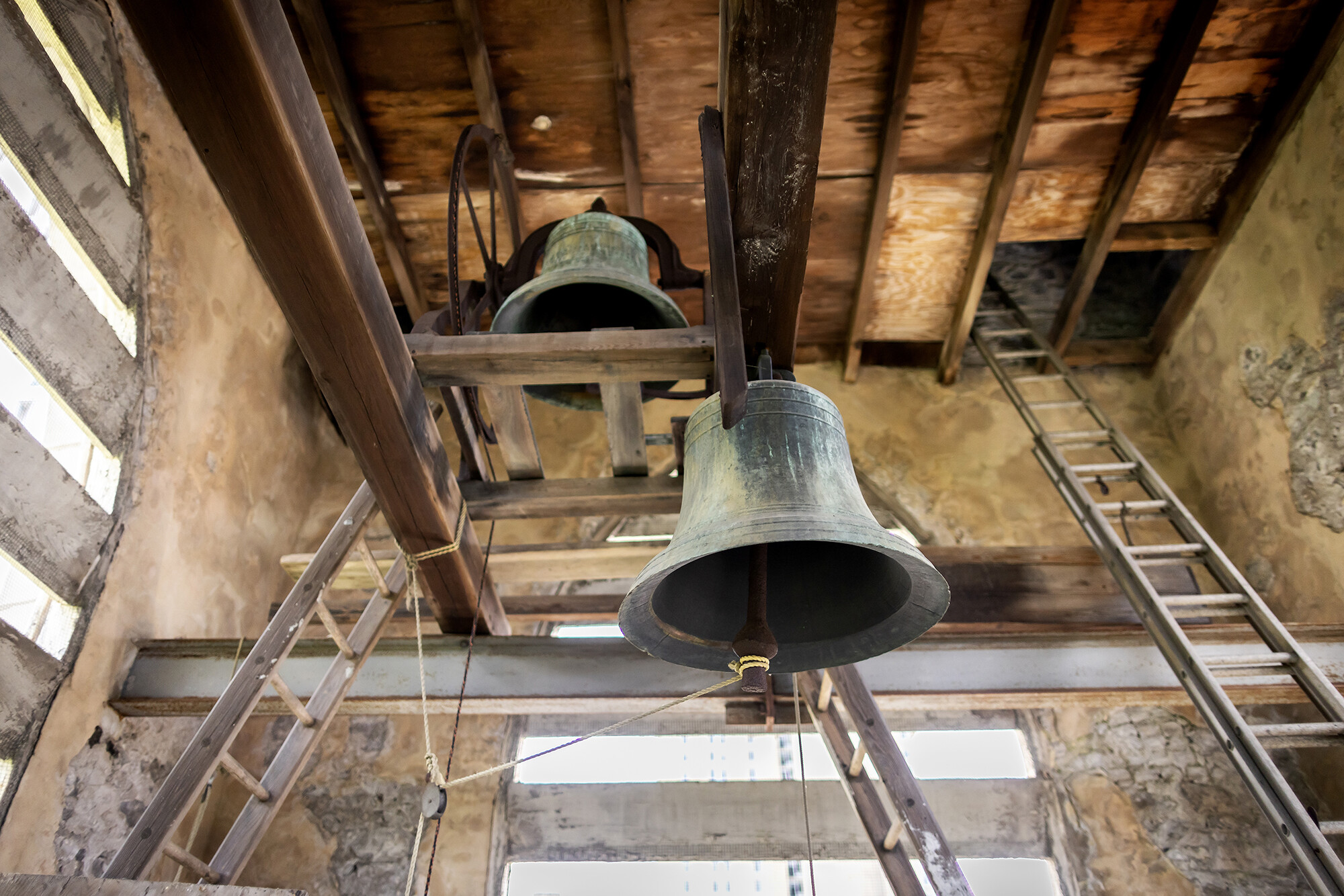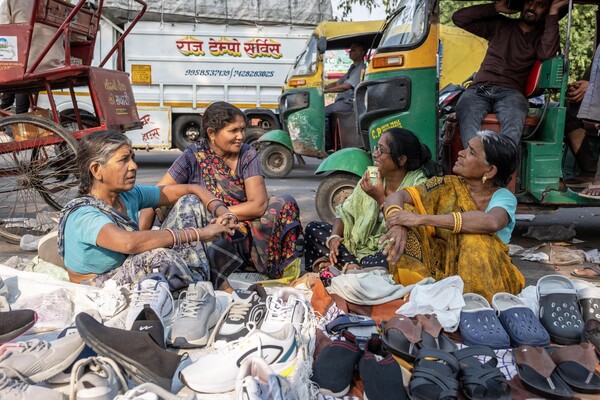
Image: Andriy Onufriyenko via Getty Images

At 1 p.m. on Friday, June 7, a cacophony of bells and other sounds will echo through the streets of Philadelphia and beyond, as part of a community initiative to call attention to gun violence.
The project—led by Penn Live Arts and capping a performance season that featured artists addressing gun violence through theater, dance, and other disciplines—is timed with National Gun Violence Awareness Day. The day began in 2015 as an act of remembrance for Hadiya Pendleton, who was shot and killed in Chicago a week after attending former President Barack Obama’s second inauguration. Each year, people remember lives lost by wearing orange on the first Friday of June.
“What we wanted to do was honor so many of the people who lost their lives to gun violence and the families affected, to call attention to the issue but also highlight resources and materials that point to anti-violence and community work,” says Christopher Gruits, executive and artistic director of Penn Live Arts. “In many ways, it’s a community organizing initiative to reach out to faith-based partners across the city, working with Interfaith Philadelphia and the Office of the Chaplain, and asking these community partners to help us literally toll the bell to bring greater awareness to this issue and honor victims.”
At more than 40 locations around the city and with the support of more than 60 partners, bells will toll for five minutes at 1 p.m., including institutions on or near Penn’s campus like Philadelphia Episcopal Cathedral and St. Mary’s Church. Other locations that do not have bells will instead make use of drums; Philadelphia Masjid will do the Jum’ah prayer and Rodeph Shalom will blow the shofar. A full list of participating sites can be found online, which range from Christ Church in Old City to the Founder’s Bell near City Hall—the largest bell in the city.
Gruits imagined the sound installation while in Hamburg, Germany, as part of an Eisenhower Fellowship in 2022. He had been working with artists on using the performing arts to promote cross-cultural understanding and empathy. After hearing church bells toll in Hamburg, he considered the enduring symbolism of bells as markers of time, calls to attend services, and warning signals.
Philadelphia also happens to have a historic connection to bells by hosting the most famous bell in the country.
“No other city in America is as deeply associated with the iconography of a bell than Philadelphia, so much so that our city streets have bells on them in many places,” says Gruits. “The bell is really a key part of Philadelphia’s identity and we felt this was a natural fit for the city.”
Gruits’ hope is that hearing the bells will interrupt the day of Philadelphians enough that they research more about what is going on and feel compelled to get involved.
“I think this ultimately shows how the arts and performing arts can serve as a catalyst to create conversation about and engage with really tough issues of our time,” he says. “That’s essentially what we’re trying to do.”
As part of the sound installation, an Interfaith Vigil Service will be held at 12:30 p.m. at the Annenberg Center for the Performing Arts, in partnership with Interfaith Philadelphia and the Religious Leaders Council of Greater Philadelphia. Speakers will include Philadelphia Poet Laureate Kai Davis and University Chaplain and Vice President for Social Equity & Community Charles “Chaz” Lattimore Howard. Attendees will then walk together to the Philadelphia Episcopal Cathedral at 1 p.m.
Howard says the tolling of the bell is a tradition that points to hope.
“Particularly around an issue where so many Americans are just feeling hopeless about inaction or very slow action around policy regulations, I think many of us are feeling hopeless,” says Howard.
“But communities of faith point to a better world, of what we could be, and call us to be our best selves, and I think that’s helpful,” he adds.
His own hope for the project, Howard says, is that when people hear the sounds they will be “called back into caring” and overcome a sense of numbness.
“I’ve long believed [faith-based community organizations] are an absolutely critical partner in any sort of violence prevention initiative.,” says Anthony Braga, the Jerry Lee Professor of Criminology in the School of Arts & Sciences and director of the Crime and Justice Policy Lab. “And it’s not necessarily because of any potentially positive effects of religion on individuals—even though religion might touch certain people and prompt them to think carefully about the moral aspects of what they may be doing—rather, I think the true power is represented by churches and faith-based coalitions as community organizations that advocate for the concerns of people in neighborhoods that are often marginalized and suffering from high levels of violence.”
Because gun violence is disproportionately committed by a small number of youth ages 18 to 24, says Braga, community religious organizations also serve as key players for changemaking and offering social services, while simultaneously working with law enforcement, government, and other community leaders.
“They provide this really important mechanism by which communities can stand up for themselves, can try and control their own spaces better, but also play an important role in talking to at-risk youth, trying to get them to think differently about what they’re doing and steer them toward opportunities, because many of these young folks most at risk of violence are not going to school or going to community centers—they’re out in the neighborhood,” Braga adds.
Sarah Hedgis-Kligerman, a member of the Religious Leaders Council, is an episcopal priest who has been involved in outreach to other religious organizations in the city about Toll the Bell. A focus, she says, has been inclusivity: to remind people that the sound installation is not about “being a building with a bell,” but making noise and creating solidarity—especially among people who continue to work toward ending gun violence.
“When you think about people who are running a marathon, and people line up with their poster at different mile marks, the runner is running the race whether you’re there or not, but to know someone sees you and hasn’t forgotten what you’re doing and believes it’s important, I think that can make a big difference,” she says. “It’s about bringing different people together who do this work to see they’re not alone.”

Image: Andriy Onufriyenko via Getty Images

Four women street vendors sell shoes and footwear on a Delhi street.
(Image: Kannagi Khanna)

nocred

nocred